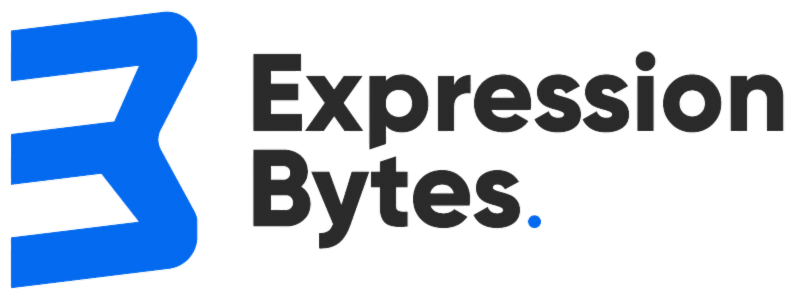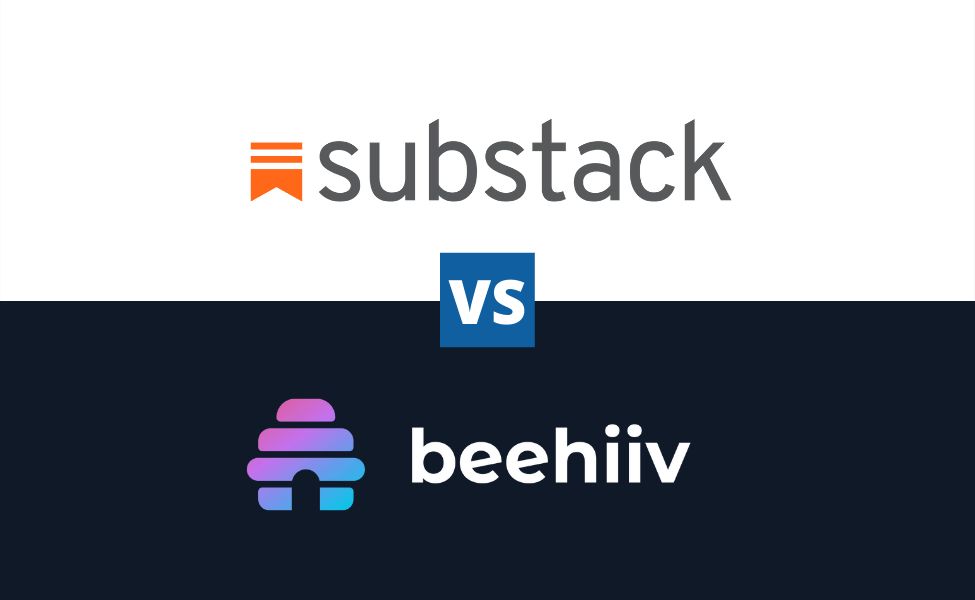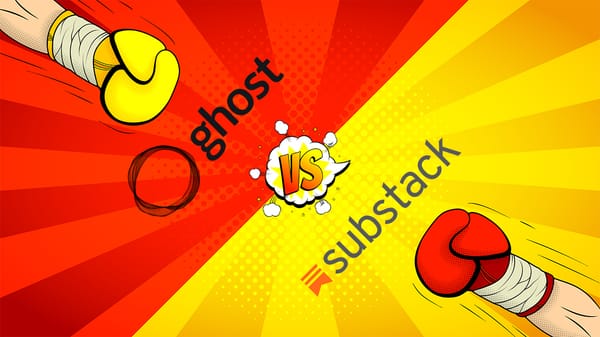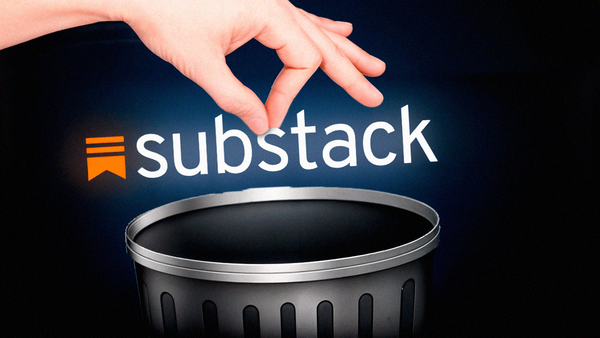The idea of Substack is doomed to fail

The idea of Substack is doomed to fail because it doesn't deliver on the promise of being the "place for independent writers" (or whatever their slogan is).
I consider myself an optimist and positive person, so making doom and gloom predictions isn't my thing. Also, I'm not saying Substack will fall or close soon.
My problem is that they promote Substack as a place where you can be independent and monetize your creations via direct payments. Yet, Substack fails miserably at delivering any independence to creators.
In fact, Substack is doing the opposite of what they preach! I hate that.
Quick takeaways:
- Substack is turning into what it criticizes.
- Substack branding everywhere.
- Sneaky growth tactics.
- They are locking you in.
- Intentional incompetence.
- More expensive than you think.
The direction of their development
Substack is turning their platform into what they criticize: a social media platform.
You just need to look at the home page to notice this.
Whether you are logged in or not, the first thing you see is the Substack Notes feed (aka. Twitter but worse).
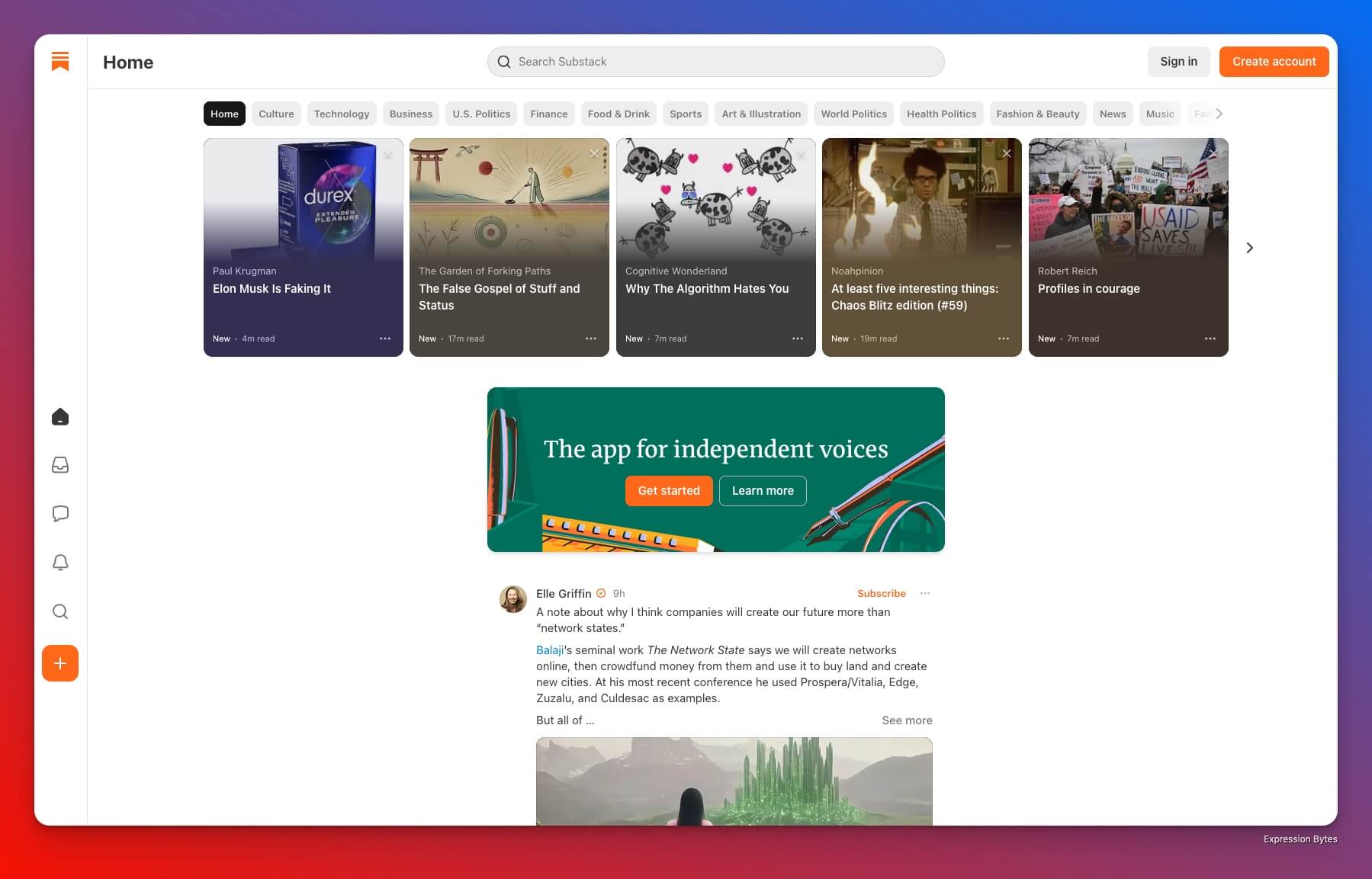
Not long ago, their home page looked completely different and showed popular publications people could subscribe to (you can see it in the Wayback Machine).
Substack became popular by making it dead simple to start a newsletter, and is (probably) one of the main reasons why newsletters became mainstream again.
However, we now see in broad daylight that they are moving from a newsletter-first into a social media-first platform.
Substack is a massive hypocrite by suggesting their platform is a solution for creators to have "their own land" while talking about the TikTok ban in January 2025.
Do you want to see an example?
Substack branding all over the place
Look at the image below.
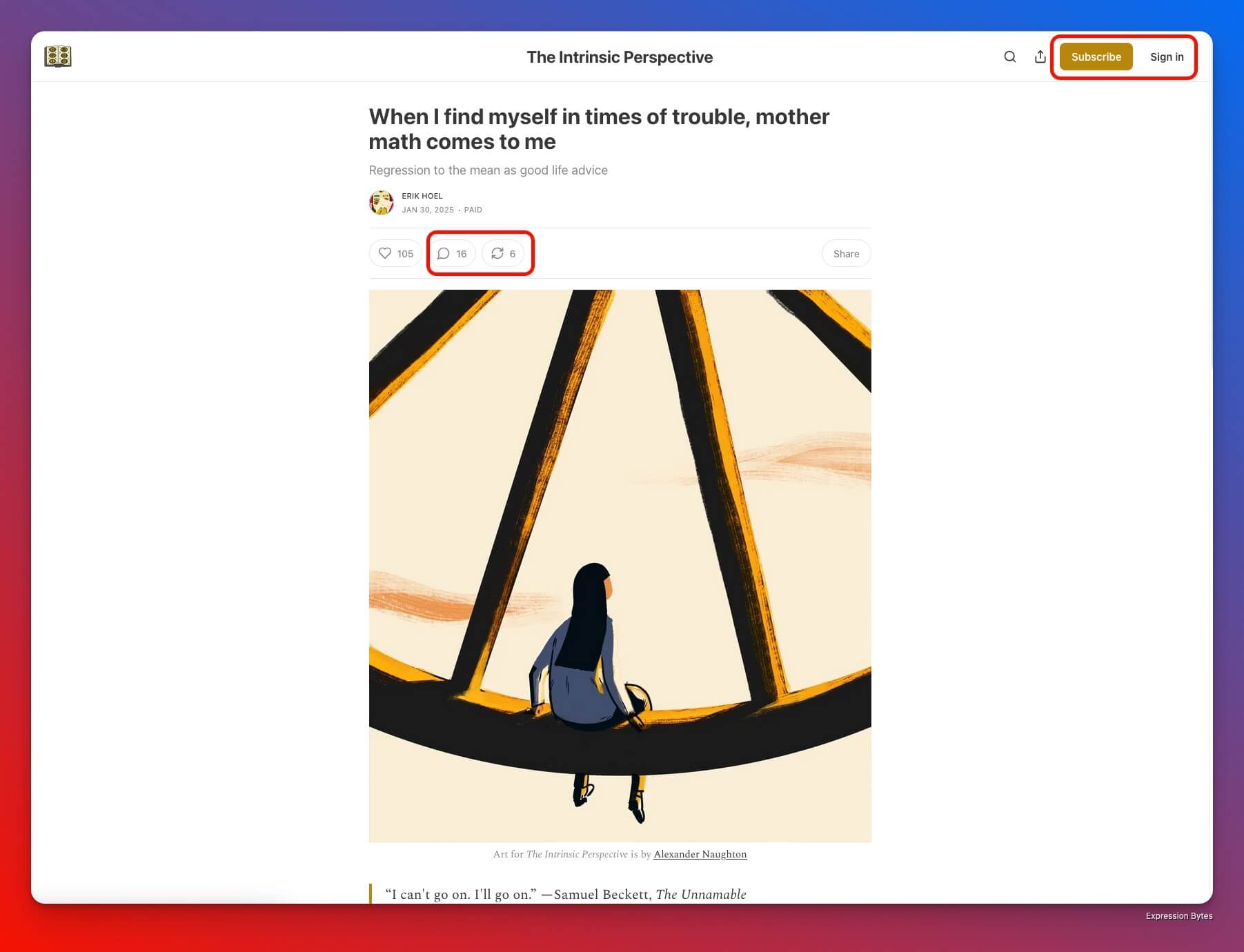
This creator uses Substack with a custom domain, giving them the most control possible over their website and online home.
But the website still has all the signs of Substack:
- It looks like every other Substack publication.
- If I click on the "subscribe" button on the top right, it suggests I follow other people and publications on Substack after subscribing to this creator (what?!).
- The 'sign in' button allows me to log in to my Substack account.
- The 'restack' button prompts me to sign in to Substack.
- The site's footer has 1 button suggesting readers start writing on Substack and 1 button to download the Substack app.
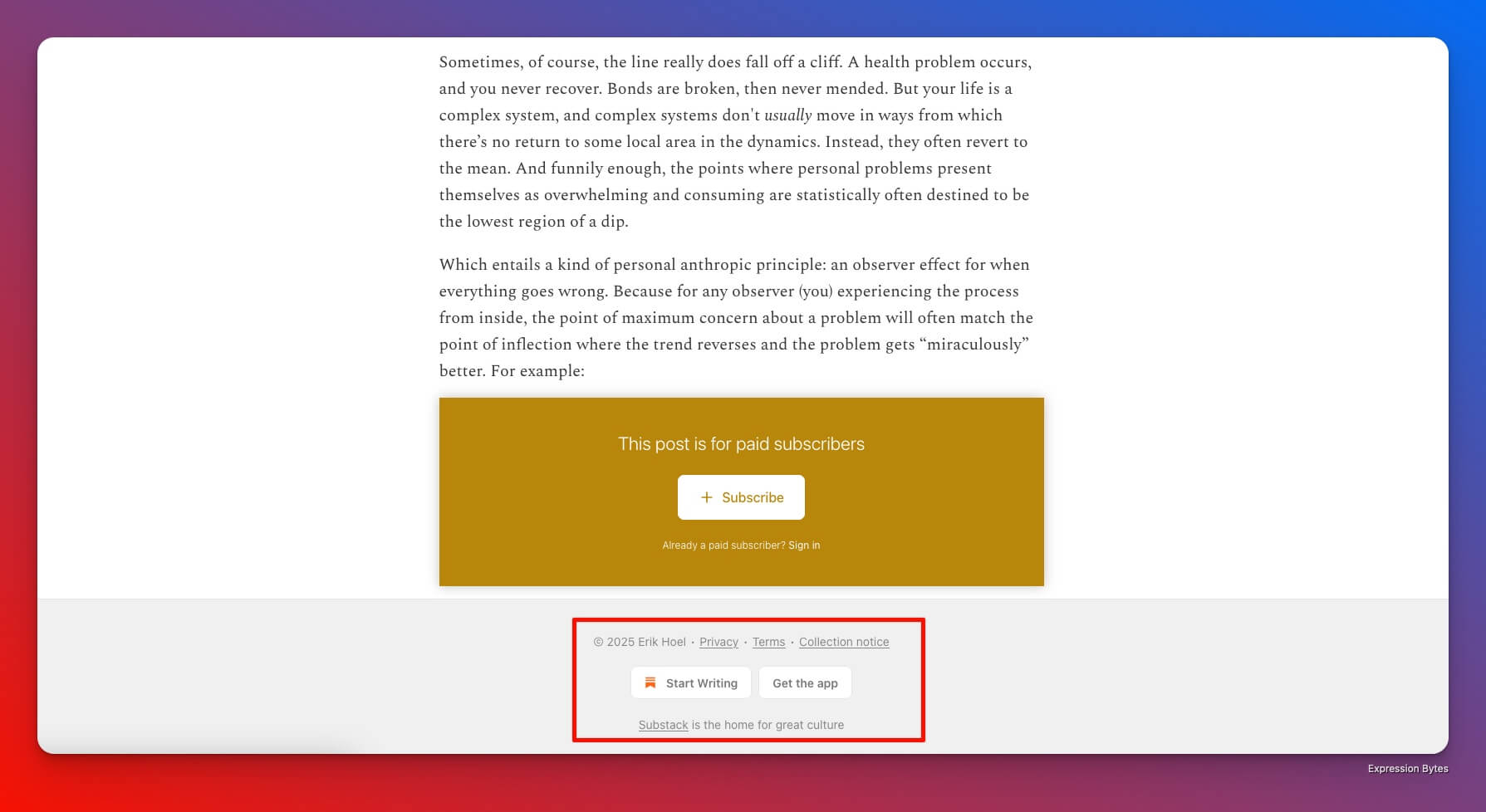
This doesn't look like a platform that helps promote "independence" to me.
Actually, from all the tools I know of, Substack is the only one where you can't hide their branding, no matter how hard you try. And this makes it hard to build a recognizable brand and identity.
Maybe this lack of customization in combination with the Substack branding all everywhere contributes to people saying "I have a Substack" instead of "I have a newsletter". But, you shouldn't call it a Substack (this is an interesting article about this topic).
Sneaky growth tactics
Can we also talk about the sneaky way Substack tries to help publications "grow"?
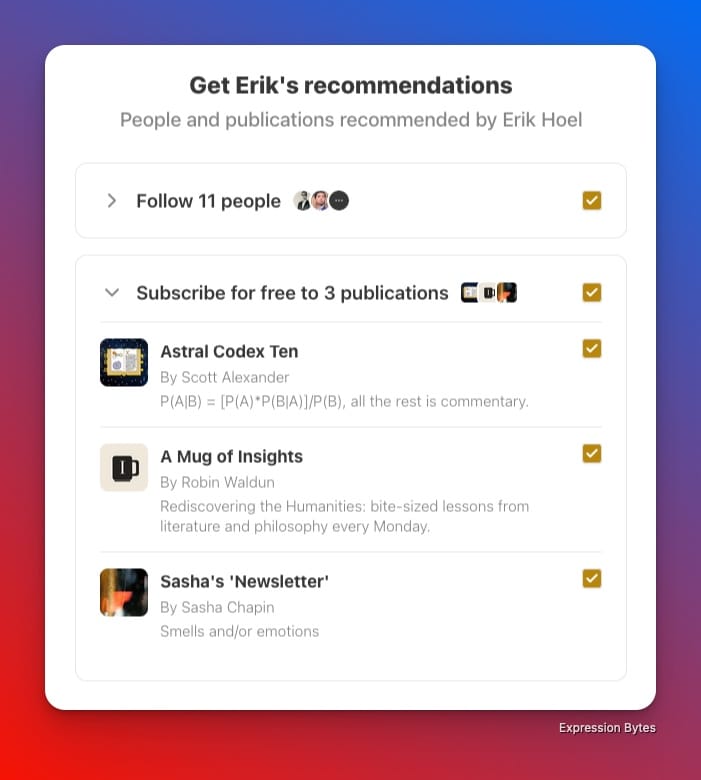
When I signed up for Erik's newsletter in the example above, Substack suggested I follow 11 people on Notes and subscribe to 3 more publications. I first read about this sneaky tactic on Big Desk Energy, and found it was a shitty tactic because the boxes were checked by default.
Beehiiv also has recommendations, but they don't check the boxes by default like this. I have seen people criticize beehiiv for being too aggressive with growth...
Some users refer to the "network effects" on Substack as a benefit for using the platform. But I have 2 problems with the current implementation:
1st, if I pressed the wrong button, I would've subscribed to a bunch of things that I don't care about by mistake.
2nd, in this signup process, your readers turn into Substack readers.
So it goes like this:
- You work to bring people to your content and convince them to subscribe (eventually paying you),
- While Substack makes your readers subscribe to other newsletters at the first opportunity.
This doesn't mean people will stop reading from you, but by using the Substack you share your readers with the platform, without knowing if Substack will bring you any additional readers in return. Or bring readers that are actually interested in you.
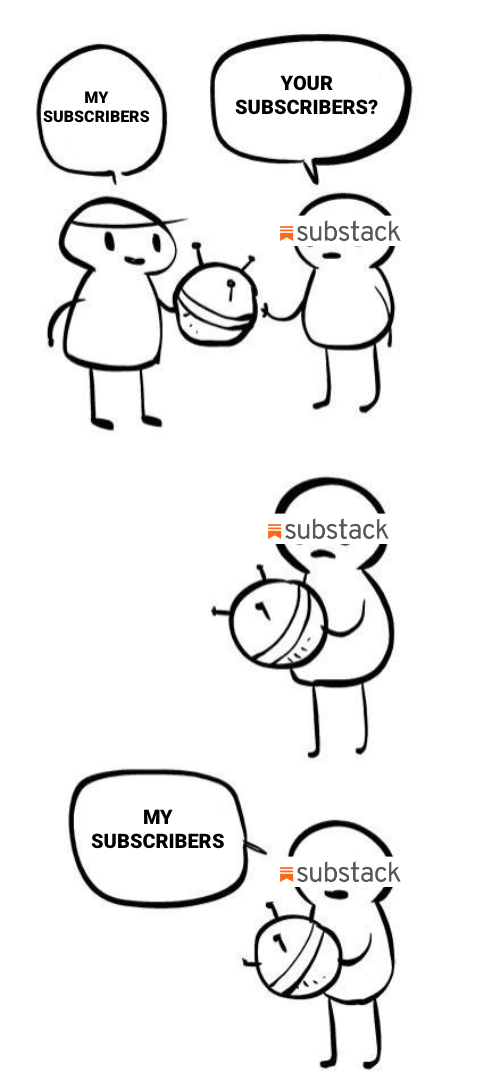
With the current method, you are more likely to get people to subscribe to you by mistake than intentionally.
I suspect Substack is doing this because growing on Substack was always hard, and most of the growth only came thanks to outside efforts like sharing posts on Twitter. But that's just a theory.
The platform lock-in
Now let me circle back to the mobile app and Substack Notes.
These two things are a trap to lock writers and readers into the platform.
Substack preaches that their platform doesn't lock you in because you can export the subscribers, content, and current subscriptions.
But what about the followers from Substack Notes? You can't export those followers.
So what happens when you want to move to another platform and can't bring your follower base? The answer is (a) you can't move out of Substack or (b) you have to start from zero elsewhere.
This is the same as any social media platform (Twitter, YouTube, or Instagram), where you can't export followers and move to a different platform like nothing changed.
The power of email and newsletters is that they rely on open protocols, which means you aren't locked-in to any system or specific platform.
With the launch of Notes, Substack makes the newsletters on the platform less agnostic and more dependent on the "social features".
Substack is putting a lot of effort into making Notes front and center on the platform, reinforcing this lock-in. And you can see this by them turning the home page into the Notes feed.
Substack is a social media platform, and there's no denying that.
Intentional lack of tools
Another thing that frustrates me a lot with Substack is that they have made intentional decisions to keep their platform closed and stale.
In 2021, before I moved from WordPress to Ghost, I was strongly considering Substack as an option.
However, I found Substack to be a very basic tool that isn't suited for any serious creator.
Substack doesn't have integrations, email automation, and other tools that professional creators want and need.
These things aren't present not because they can't, but because they don't want them.
Since I identified those flaws with Substack, beehiiv started from zero and developed those things missing with Substack. On top of that, beehiiv also added better customization and monetization options that Substack users can only dream of having.
Also, Substack's SEO is awful.
I don't know anyone with decent traffic from search engines that uses Substack.
And I have seen loads of people brag about getting traffic for projects, blogs, and apps using other tools, but never with Substack! And that says a lot.
This also made me realize that Substack isn't the best at anything other than allowing people to publish different types of content on the same platform (blog, newsletter, podcast) for free.
But this "free" comes with the costs mentioned above:
- no customization,
- they lock you in,
- and make your subscribers, their subscribers.
Although you don't need to pay, if you turn paid memberships on, Substack will take 10%.
The fees
The thing I probably like the least about Substack is the fees.
If you turn paid memberships on, Substack will take a 10% cut of every payment, without a limit for how much they keep.
At first look, 10% is a "small" fee.
But when you do the math, Substack can become the most expensive newsletter.
Imagine readers pay you $50 per year. This is how much Substack keeps:
| Subscribers | Your revenue | Substack's fees |
|---|---|---|
| 100 subs | $4,500 | $500 |
| 500 subs | $22,500 | $2,500 |
| 1,000 subs | $45,000 | $5,000 |
| 5,000 subs | $225,000 | $25,000 |
For comparison, this is how much some Substack alternatives will cost you (even by ignoring the free plans):
| Subscribers | Substack | Beehiiv | Ghost | Kit |
|---|---|---|---|---|
| 100 subs | $500 | $408 | $300 | $108 |
| 500 subs | $2,500 | $408 | $300 | $300 |
| 1,000 subs | $5,000 | $408 | $300 | $300 |
| 5,000 subs | $25,000 | $828 | $780 | $792 |
As you can see, Substack prices grow exponentially compared to other newsletter tools that I consider better and more complete than Substack.
Closing thoughts
I would like to finish this piece by saying that you are free to disagree with me, and if you want to share your thoughts, contact me.
I respect Substack, but I don't like it as a platform. I think Substack has many flaws. But it also has some positives that I mentioned somewhere in my review.
Now, what should you do with this information? Do what you think is right and makes you happy:
- If you want to use Substack, go for it.
- If the things mentioned in this post make you want to avoid Substack, that's also fine (I guess).
Either way, I believe you are now better informed to make a decision about where to build your online home.
Also, I didn't mention the many controversies and "political" discussions around Substack that caused some writers to leave the platform. I don't want to get involved with any of that, but I also know that could be seen as a negative.
My opinion is from a technical perspective, and defending creators to keep control of their properties.
And on that end, Substack is doing a bad job, which makes me feel that the idea of Substack is doomed to fail.
